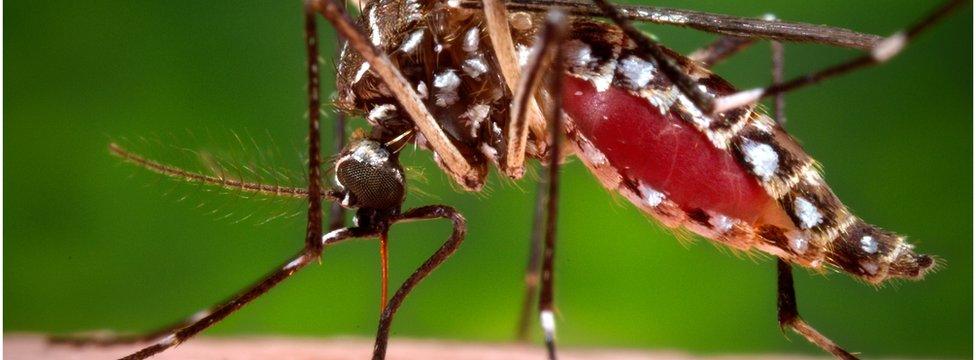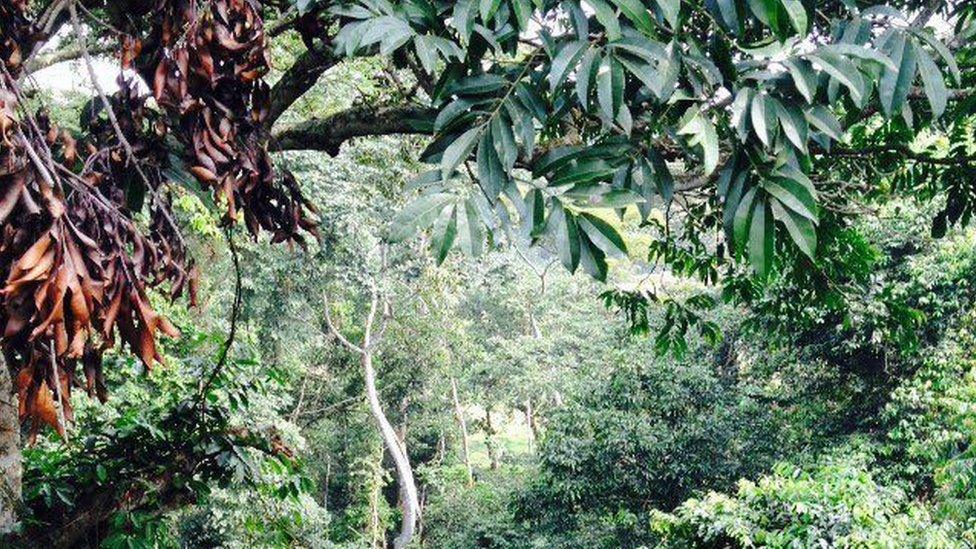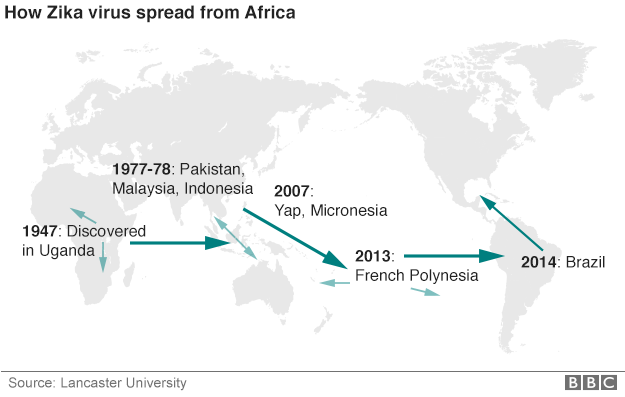Zika virus: Inside Uganda's forest where the disease originates
- Published
Inside the Zika forest
The Zika virus, which has been linked to thousands of babies being born with underdeveloped brains in Brazil, was discovered in a forest in the East African state of Uganda seven decades ago. BBC Africa's Catherine Byaruhanga visited the forest.
The Zika forest is not well known in Uganda, and most people will be hard-pushed to tell you where it is. The word itself means overgrown in the local Luganda language.
There is dense vegetation, a wide range of trees and lots of small animals. The only people you are likely to meet here are the forest-keeper and his family. They live in a small house made of corrugated iron sheets.
The virus was discovered in the forest - then a hub of scientific research in East Africa - in 1947 by accident by Ugandan, American and European scientists working on another viral disease, Yellow Fever.
While testing monkeys in the forest the scientists, whose research had been funded for a decade by the Rockefeller Foundation, came across a new microorganism, which they named Zika.

What is the Zika virus:

Spread by the Aedes aegypti mosquito, which also carries Dengue Fever and Yellow Fever
First discovered in Uganda in 1947 but now spreading in Latin America
Scientists say there is growing evidence of a link to microcephaly, that leads to babies being born with small heads
Can lead to fever and a rash but most people show no symptoms, and there is no known cure
Only way to fight Zika is to clear stagnant water where mosquitoes breed, and protect against mosquito bites

Only two cases of the virus have been confirmed in Uganda in the past seven decades.
This is because the types of mosquitoes that would transmit the virus to humans don't often come into contact with the general population, says Dr Julius Lutwama, a leading virologist at the Uganda Virus Research Institute.
"The Aedes we have, Aedes aegypti formosus, normally does not bite humans. And then we have other [mosquitoes] which live in the forests and prefer to bite at dusk and dawn," Dr Lutwama adds.
This is in contrast to Latin America, where a different sub species, Aedes aegypti aegypti, is spreading the Zika virus.

Not many Ugandans know where the Zika forest is

The virus is suspected of leading to babies being born with small heads
Much of the Zika forest, which is along the highway between the capital Kampala and Entebbe International Airport, has been lost to development projects, as Uganda's population grows.
All around it new big houses with freshly tiled roofs are springing up. What's left of it is gazetted for scientific research.
Several kilometres up the main road is the Uganda Virus Research Institute. It's a massive campus on a hill overlooking Lake Victoria.
Security is tight here because samples of dangerous organisms like Ebola, Yellow Fever and Zika are stored there.
This is also the only place in Uganda where you can test for Zika.

But as Dr John Kayuma, one of the laboratory managers told me, one of the reasons why there are few recorded cases in Uganda could be because not many people have been tested for it.
"It is possible that there could be several people, or so many people out there with the Zika virus infection, but because many people do not seek treatment in the hospitals, we could be missing out.
"And also the surveillance has probably not picked them out. There's a possibility that there are more cases out there."
In a few months the government will be starting a study to find out how widespread the Zika virus and other flaviviruses like Yellow Fever, Dengue and West Nile are amongst the population.
In the meantime, Dr Lutwama and his team say they are keeping an eye on the type of mosquitoes in the country in case any of the ones that are good at spreading the disease enter Uganda.